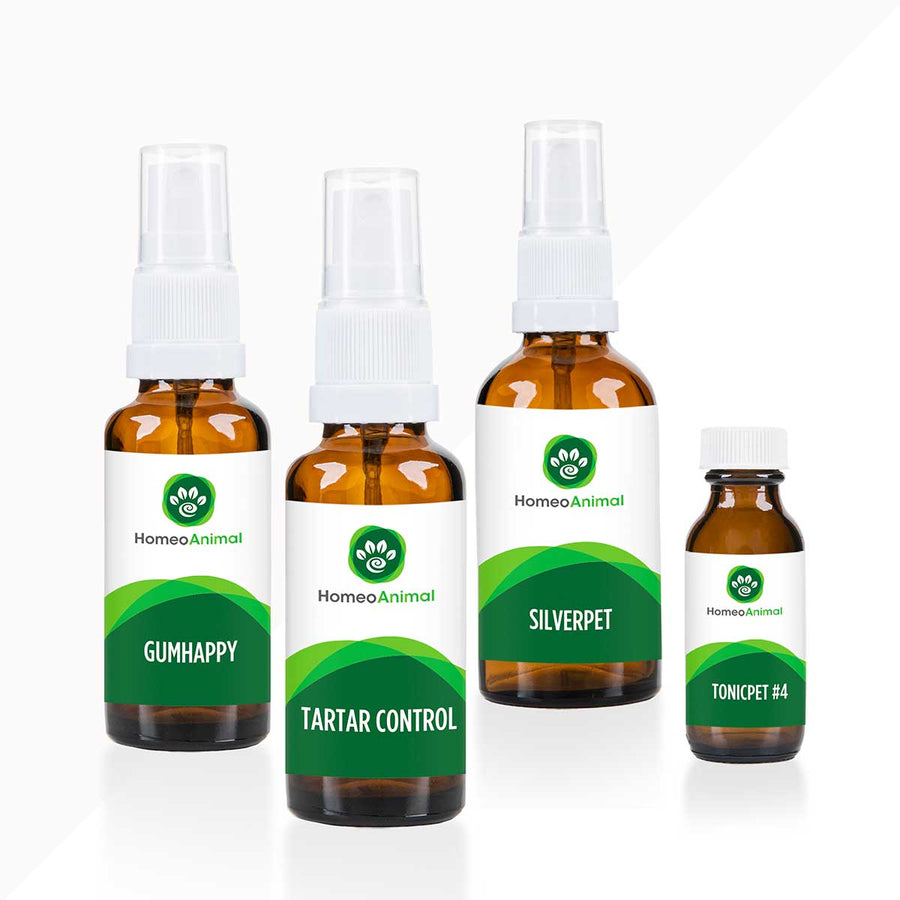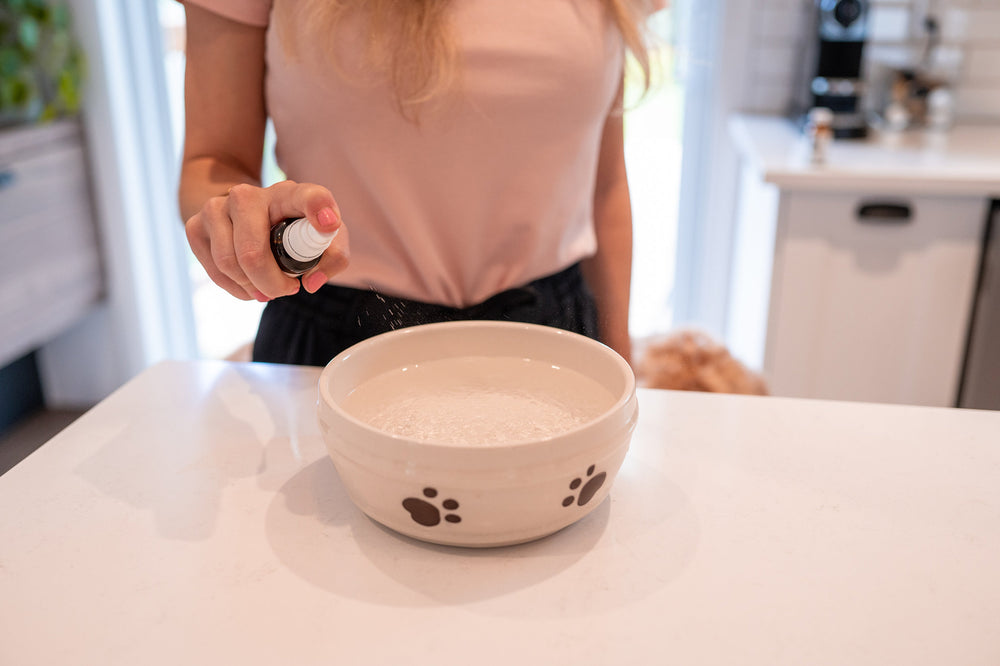Expert-Approved: 3 Easy Ways to Prevent Cat Gingivitis at Home
Did you know that gingivitis is a common health concern for cats, particularly those over four years old? The good news is that this condition can often be reversed with early detection and proper dental care, helping your pet maintain a healthy and happy life.
In this article, we’ll explore the key facts about cat gingivitis, including its causes, clinical signs, and simple steps you can take to help prevent it.
What Exactly is Gingivitis in Cats?

Gingivitis in cats refers to inflammation of the gums, also known as the "gingiva." It develops when plaque—a sticky film of bacteria, food particles, and debris—builds up on the teeth, causing irritation and swelling.
Cat gingivitis vs. periodontitis
It’s important to distinguish between gingivitis and periodontitis in cats. Gingivitis is reversible with proper care, while periodontitis is not. However, if left untreated, gingivitis can progress to periodontitis, leading to more serious dental issues.
Cat gingivitis vs. stomatitis
Stomatitis is a more severe form of inflammation than gingivitis, affecting not only the gums but also the tongue, lips, and other soft tissues in and around the mouth. It is often caused by the herpes virus (HSV) and is also referred to as herpes stomatitis.
What are the Clinical Signs of Feline Gingivitis?
The most common clinical signs of gingivitis in cats include:
- Reluctance to groom
- Weight loss
- Red or swollen gums
- Increased irritability
- Plaque and tartar buildup
- Excessive drooling
- Difficulty eating or a reduced appetite
- Bad breath (halitosis)
Cats with Feline Immunodeficiency Virus (FIV) are more prone to severe periodontal disease and gingivitis due to their weakened immune systems. Similarly, Feline Leukemia Virus (FeLV) has been linked to gum inflammation and other oral health issues in cats.
Brachycephalic cat breeds, such as the Burmese, Himalayan, and Persian, are more susceptible to gingivitis due to their smaller skull structure. This often leads to crowded teeth, which increases the risk of plaque buildup and gum inflammation.
Like many felines, your cat may instinctively hide signs of pain or discomfort. That’s why regular monitoring—whether through a veterinarian or a pet homeopathy specialist—along with proactive care is essential for their health and well-being.
Can You Prevent Cat Gingivitis at Home?

The good news is that gingivitis in cats can often be prevented at home with simple, hassle-free strategies, such as:
#1. Proper diet
Your cat’s diet not only impacts their overall nutrition but also plays a role in their dental health. Foods high in sugar or otherwise unsuitable for cats can contribute to gingivitis by causing gum inflammation.
Establishing regular feeding times and providing a nutritionally balanced diet are essential for your cat’s overall health. Proper nutrition not only supports their dental health but also strengthens their immune system, helping them stay resilient against disease and illness.
Exclusively feeding a wet diet can contribute to bacteria buildup and gingivitis. Unlike dry food, wet food lacks an abrasive texture to help clean the teeth and tends to stick to them, creating an ideal environment for bacterial growth.
#2. Regular brushing
Daily tooth brushing with a cat-specific toothpaste helps remove debris and food particles that may have adhered to your pet’s gums and teeth. These are the usual culprits that trigger this health issue.
Your cat may not immediately accept tooth brushing, but a gradual approach can help:
Week 1: Let your cat become familiar with the toothpaste.
Week 2: Allow them to get used to the taste.
Week 3: Introduce the toothbrush slowly.
Week 4: Begin brushing gently.
Taking it step by step can make the process smoother and more comfortable for your cat. You can also encourage a positive association with daily brushing by offering rewards. Additionally, use this time to check for redness, swelling, or any other signs of potential dental issues.
Cat parents can use a variety of tools to clean their cat’s teeth, including a small toothbrush, a finger toothbrush, gauze wrapped around their finger, or a cotton swab. Choosing the right tool can make the process easier and more comfortable for both the cat and the owner.
If brushing your dog's teeth proves difficult, consider Zumalka’s TARTAR CONTROL remedy to help maintain clean teeth and prevent plaque buildup.
#3. Regular monitoring
As mentioned earlier, cats have an instinct to hide pain and discomfort. If you notice any irregularities in your pet’s gums or teeth, it’s best to consult a veterinarian or a qualified pet homeopath. Early detection is key to managing gingivitis and other dental health issues effectively.
Additionally, Zumalka’s GUMHAPPY is specially formulated to support oral health by addressing red, unhealthy gums. For a more complete approach, the GUMHAPPY OPTIMAL KIT includes additional products that help reduce tartar buildup, strengthen teeth, and support the immune system. Together, these solutions promote overall dental health and well-being in cats.
If your cat has stomatitis, incorporating natural remedies like CHAGA and SHIITAKE may offer additional support in managing the condition.
What are the Causes of Gingivitis in Cats?
Contrary to common belief, cat gingivitis doesn’t occur spontaneously. Its primary cause is the buildup of plaque and tartar in your pet’s mouth. Additionally, several predisposing factors can increase the risk, including:
- Fractured teeth
- Viral infections (FeLV, FIV, feline calicivirus)
- Malocclusion (misalignment of teeth)
- Autoimmune diseases
- Crowded teeth
- Gingivostomatitis
- Poor dental care
- Tooth resorption
- Old age
- A diet high in soft food
Regular consultations with your veterinarian or pet homeopathy specialist are essential for maintaining your cat’s optimal oral and dental health. Be sure to report any irregularities as soon as they arise to prevent potential complications.
How Does a Vet Diagnose Cat Gingivitis?

A veterinarian diagnoses cat gingivitis through a thorough physical examination and a review of your pet’s medical history. In some cases, diagnostic tests such as dental X-rays (under anesthesia), blood work, and urine analysis may be recommended for a more in-depth assessment.
What are the Conventional Treatment Options for Cat Gingivitis?
Veterinarians use conventional treatments to manage cat gingivitis, focusing on removing plaque and tartar, addressing underlying causes, and relieving pain. Common treatment options include:
- Scaling and polishing – to remove plaque and tartar buildup
- Professional dental cleaning under anesthesia – for thorough cleaning and assessment
- Tooth extraction – if necessary for severe cases
- Gingivectomy – to remove diseased gum tissue
- Treatment of underlying conditions – such as infections or immune-related issues
- Antibiotics and anti-inflammatory medications – to manage infection and reduce inflammation
FAQs
How do you treat gingivitis in cats?
Gingivitis in cats is treated with professional dental cleanings, regular tooth brushing, and a proper diet. In some cases, antibiotics, anti-inflammatory medications, or natural supplements may be recommended by a veterinarian or a pet homeopathy expert.
Can cats survive gingivitis?
Yes, cats can survive gingivitis, especially with early detection and proper care. Regular dental cleanings, tooth brushing, and a healthy diet help manage the condition. If untreated, gingivitis can progress to severe periodontal disease, impacting overall health.
How do I tell if my cat has gingivitis?
You can tell if your cat has gingivitis by looking for signs like red, swollen gums, bad breath, drooling, difficulty eating, and plaque buildup. A veterinarian can confirm the diagnosis through a dental examination.
How do you treat gingivitis in cats DIY?
To treat gingivitis in cats at home, brush their teeth regularly with pet-safe toothpaste, provide dental treats or toys, and offer a balanced diet. Natural remedies like GUMHAPPY OPTIMAL or herbal supplements may also support gum health.
Should I brush my cat's teeth with gingivitis?
Yes, brushing your cat’s teeth is important, even with gingivitis. Use a soft-bristled toothbrush and pet-safe toothpaste to prevent further plaque buildup. However, consult your vet or pet homeopathy expert for guidance if the gums are very inflamed or painful.
Is there a natural way to get rid of gingivitis?
Yes, natural remedies like coconut oil, aloe vera gel, and herbal supplements (e.g., CHAGA and SHIITAKE) may help reduce inflammation. Regular tooth brushing, a proper diet, and dental treats also support gum health. Consult your vet or pet homeopathy specialist first.
Can gingivitis go away on its own?
No, gingivitis does not go away on its own. Without treatment, it can worsen and lead to periodontal disease. Regular dental care, including brushing and professional cleanings, is essential to manage and reverse the condition.
What does stage 1 gingivitis look like?
Stage 1 gingivitis in cats appears as mild redness and inflammation along the gumline, often without significant pain or bleeding. There may be slight plaque buildup, but no tooth damage yet. Early intervention can reverse the condition.
Can toothpaste stop gingivitis?
Yes, pet-safe toothpaste helps prevent and manage gingivitis by reducing plaque and bacteria buildup. Regular brushing with enzymatic toothpaste can slow progression, but professional cleanings and a proper diet are also essential for optimal dental health.
Does gingivitis go away?
Yes, gingivitis can go away with proper care, including regular tooth brushing, dental cleanings, and a healthy diet. Early treatment is key, as untreated gingivitis can progress to irreversible periodontal disease.
How long can a cat live with gum disease?
Cats can live for years with gum disease, but untreated cases can lead to pain, tooth loss, and infections that impact overall health. Proper dental care and early intervention help maintain their quality of life and longevity.
Can I use human toothpaste on my cat?
No, you should never use human toothpaste on your cat. It contains ingredients like fluoride and xylitol, which are toxic to cats. Always use pet-safe toothpaste specifically formulated for feline dental care.
A Final Word
To keep cat gingivitis at bay, consistent dental care and regular brushing should be part of your pet’s routine. Additionally, consulting your vet or a holistic pet care specialist at the first signs of this condition can help maintain your cat’s oral health.
Cats may not always show obvious signs of gingivitis, so regular oral checks are essential to catch any issues early. If you have concerns, consult your veterinarian or a holistic pet care specialist promptly.







This blog post on cat gingivitis is incredibly informative! I appreciate the vet-approved tips on prevention and treatment, which are essential for keeping our feline friends healthy and happy.
Leave a comment